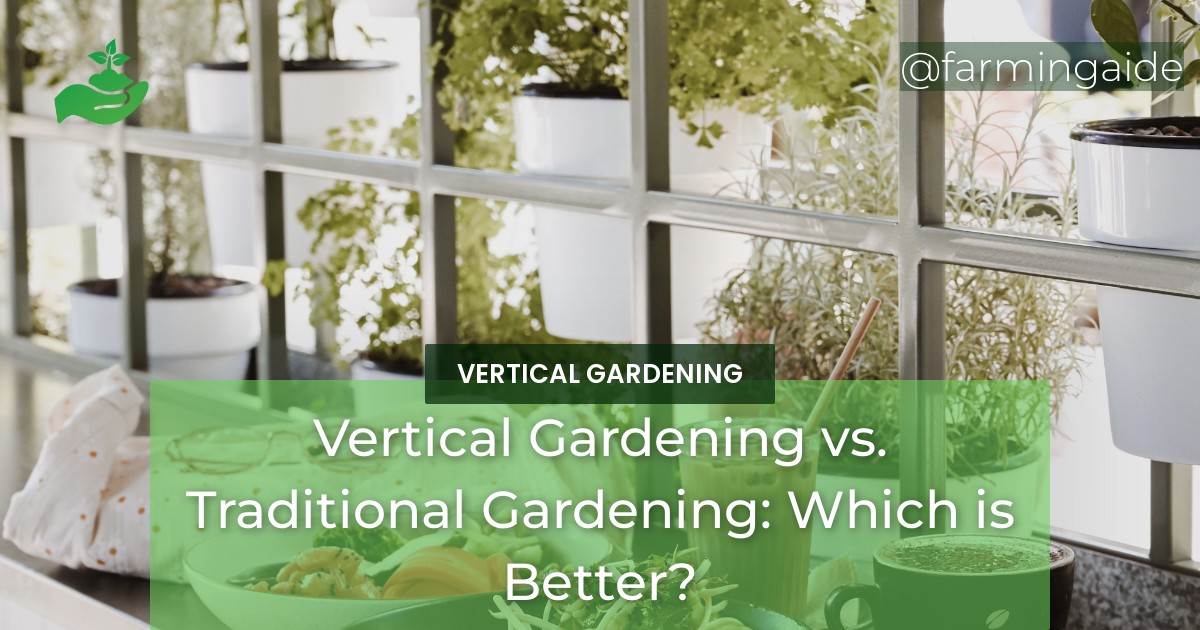Introduction
Vertical gardening vs. traditional gardening are two popular methods of cultivating plants that have their own unique advantages and disadvantages. While traditional gardening has been around for centuries, vertical gardening is a relatively new trend that has gained popularity in recent years due to its space-saving capabilities. Both methods have their pros and cons, and choosing the right method depends on several factors, including available space, desired plant variety, and maintenance needs. In this article, we will compare the benefits and drawbacks of vertical gardening and traditional gardening, and help you decide which one is best suited for your space and lifestyle.
Pros and Cons of Traditional Gardening
Pros
- Can produce a higher yield
- A wider variety of plants can be grown
- The soil is easier to maintain
Traditional gardening involves planting in the ground, typically in a designated area of a backyard or garden. This method has its advantages, including the ability to produce a higher yield of crops and a wider variety of plants. The soil used in traditional gardening is typically richer and more nutrient-dense, which makes it easier to maintain healthy plants.
Cons
- Requires a larger space
- More maintenance is needed
- Prone to pests and diseases
However, traditional gardening also has its disadvantages. It requires a larger space to plant, which may not be feasible for those with limited outdoor space. Additionally, traditional gardens require more maintenance, including regular watering, weeding, and pest control. Traditional gardens are also more prone to pests and diseases, which can harm crops and require additional maintenance.
Pros and Cons of Vertical Gardening
Pros
- Saves space
- Easier to maintain
- Fewer pests and diseases
In contrast, vertical gardening involves planting in a vertical structure, such as a wall or planter, which maximizes outdoor space. This method has several advantages, including space-saving capabilities and a reduced risk of pests and diseases. Vertical gardens are also easier to maintain, requiring less watering and weeding.
Cons
- Limited variety of plants
- Not suitable for larger crops
- Soil can dry out quickly
However, vertical gardening also has its limitations. It is not suitable for larger crops, such as corn or pumpkins, and may only support a limited variety of plants, such as herbs or small vegetables. Soil in vertical gardens can also dry out quickly, requiring more frequent watering and fertilization.
Comparison of Vertical Gardening and Traditional Gardening
When comparing vertical gardening and traditional gardening, there are several factors to consider, including space requirements, maintenance needs, plant variety, yield potential, and cost.
Space Requirements
Traditional gardening requires a larger outdoor space, whereas vertical gardening maximizes space by planting in a vertical structure.
Maintenance Needs
Vertical gardening requires less maintenance, including less watering and weeding, whereas traditional gardening requires more frequent maintenance.
Plant Variety
Traditional gardening supports a wider variety of plants, whereas vertical gardening may only support a limited variety of plants.
Yield Potential
Traditional gardening has a higher yield potential, whereas vertical gardening may have a lower yield potential due to space limitations.
Cost
Traditional gardening may be less expensive to start, whereas vertical gardening may require an initial investment in a vertical structure.
Factors to Consider When Choosing Between Vertical and Traditional Gardening
When deciding between vertical and traditional gardening, there are several factors to consider, including available space, climate and environment, type of plants desired, level of maintenance, and budget.
Available Space
If outdoor space is limited, vertical gardening may be the better option.
Climate and Environment
Consider the climate and environment when choosing between vertical and traditional gardening, as certain plants may thrive better in one method over the other.
Type of Plants Desired
If a wider variety of plants is desired, traditional gardening may be the better option.
Level of Maintenance
If less maintenance is desired, vertical gardening may be the better option.
Budget
Consider the initial cost of starting a garden when deciding between vertical and traditional gardening.
Which Gardening Method Suits Your Space and Lifestyle Better?
When choosing between vertical and traditional gardening, it is important to consider various factors, including available space, desired plant variety, and maintenance needs. Ultimately, the choice depends on individual preferences and lifestyle. Those with limited outdoor space may benefit more from vertical gardening, while those seeking a wider variety of plants may prefer traditional gardening. Regardless of which method is chosen, gardening can be a rewarding hobby that produces fresh, healthy produce.
RELATED ARTICLES:


